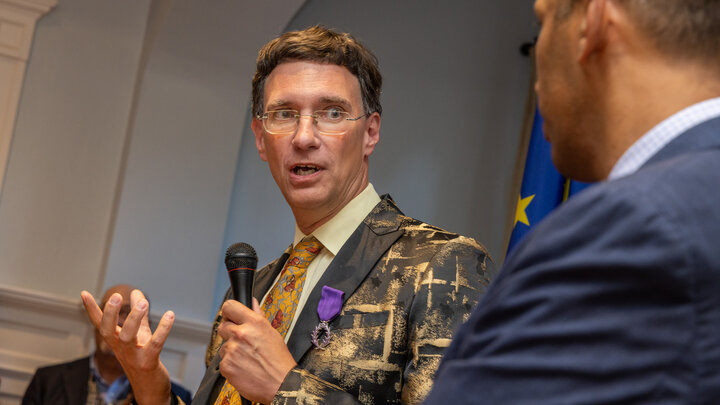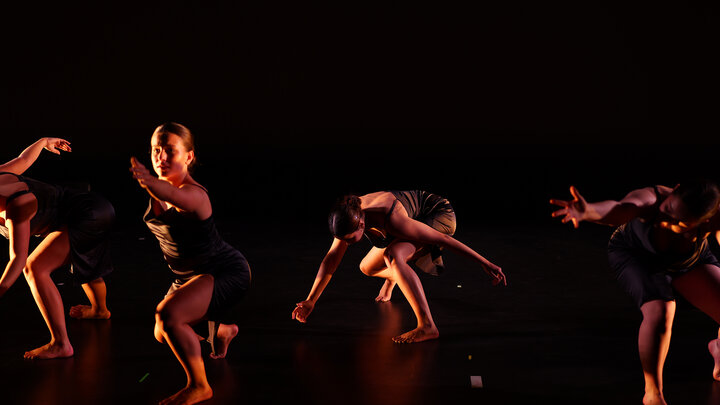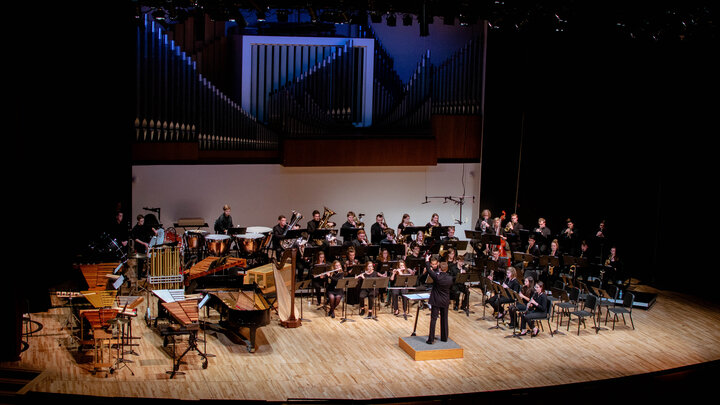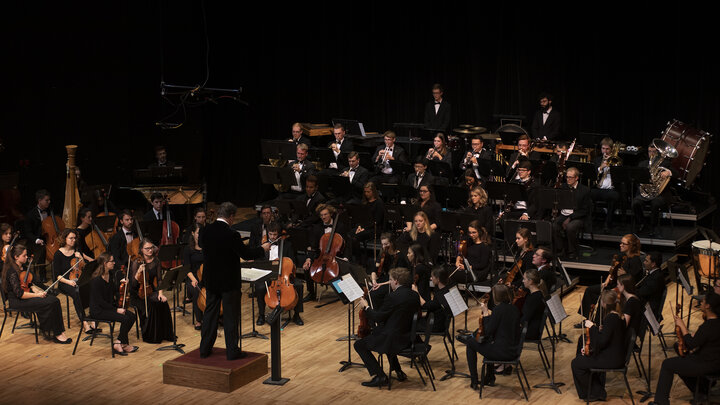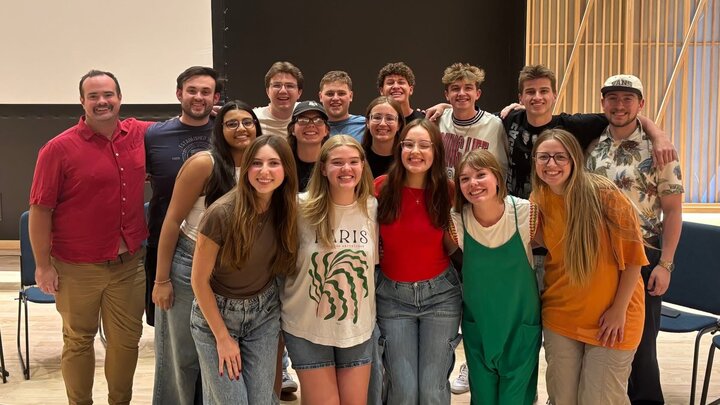Lincoln, Neb.--University of Nebraska–Lincoln art history alumnus Darius Spieth, the San Diego Alumni Association Chapter Alumni Professor of Art History and Sternberg Professor in the LSU Honors College at Louisiana State University, was decorated with the rank of Chevalier (knight) of the “Ordre des Palmes académiques” (Order of Academic Palms) by the French government. He received the honor during a ceremony at the French Consulate in New Orleans on Sept. 9.
Founded by Napoleon in 1808 to honor educators, the Palmes académiques is among France’s oldest civil honors, recognizing distinguished academics for their service to universities, education and science.
“I was absolutely delighted when I found out about [the honor],” Spieth said. “I have a very busy teaching schedule with literally thousands of students here at LSU every semester. And I have always a very intense and ambitious program for research and publications, so the e-mail from the French embassy in Washington came totally unexpectedly. It was a wonderful surprise. Much of my research is focused on French art, literature, culture and the French art market, from the 18th century to the present day.”
At UNL, Spieth received his Bachelor of Arts in art history and French in 1993 with highest distinction.
“Darius was simply one of the best undergraduate students I taught during my 36 years of teaching,” said Michael Hoff, professor of art history. “He was incredibly bright and highly motivated to learn art history. We are incredibly proud of Darius for receiving this award.”
A specialist in modernism and the economics of art, Spieth’s research spans art markets, the intellectual history and French visual culture. His journey toward a deep appreciation of French art and culture began as a teenager.
“I visited France for the first time when I was 14 years old, staying with an exchange family near Lyon,” he said. “This involvement has been an important part of who I am and what I do. But most importantly, this distinction recognizes my engagement for French art, language and culture at LSU and in Louisiana, a state which, for historical reasons, has strong ties to France.”
After graduating from Nebraska, he attended the University of Paris IV and completed his Ph.D. at the University of Illinois at Urbana-Champaign, later completing an M.B.A. degree in finance at the International University of Japan in Niigata.
“This trajectory really helped build up an international reputation for art market studies and art market economics over the last 30 years,” Spieth said. “Obviously the scope of this research is much larger than France, but historically, France is a critical component of the story.”
He continues to spend time in France each year conducting research in libraries and archives and giving talks at institutions such as the Louvre and the Festival of Art History in Fontainebleau.
France’s influence, Spieth said, is also personal.
“I have met in person (albeit very briefly) two French Presidents, Valéry Giscard d’Estaing and Emmanuel Macron. Pierre Rosenberg, the legendary director of the Louvre, once gave me a private tour to his private collection. That was deeply moving,” he said. “But more consequential were the exchanges and friendship with Marc Fumaroli, one of the ‘immortals’ of the French Academy, which had a big impact on me personally and intellectually.”
Spieth continues to publish widely. His “Grove Dictionary of Art Markets,” which he edited, is set to be released by Oxford University Press in February. He is also working on “The Canon and the Market: How the Symbiosis of Art, Rankings and Money Evolved Over Time” and a monograph on the “last symbolist” painter Léonard Sarluis.
Spieth’s path toward art history came through his early experiences with art markets.
“Even before I was old enough to attend elementary school, my parents took me to art auctions,” he said. “As a teenager growing up in Europe, I discovered my passion for buying and selling at flea and antique markets. I soon began to collect mid-century glass, before getting into paintings of fringe Surrealists, art of the imagination, etc. The late 1980s was an amazing moment of creativity on all fronts, not only in fine arts, but also music and literature. But none of it was really appreciated in a formal educational setting at the time, as it is today. So, I am grateful for growing a career out of what seemed to be quite a marginal, outsider interest at the time. There is a lot more acceptance for art and design, and a greater appreciation for its history today, I think.”
Spieth credits his time at Nebraska for inspiring his academic path.
“I loved my time at UNL,” Spieth said. “It was an intellectual epiphany—so many things to discover. I remember vividly, for instance, a course on the Nag Hammadi library and early Christian literature (taught in the History department), which came as a revelation. I am still in contact with Prof. Michael Hoff from UNL, until this day. I still remember the first day of my first class with him. Profs. Christin Mamiya and Alison Stewart were great inspirations and unlocked the world of art history for me.”
